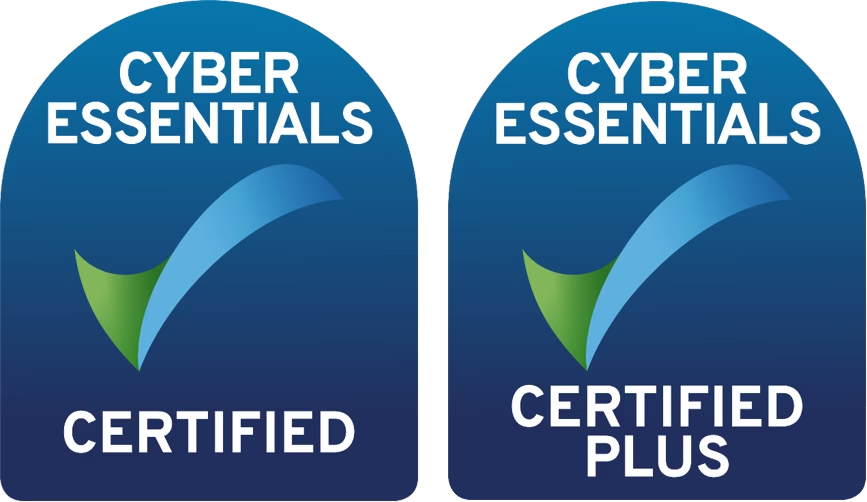Is your business protected from the 6 known Wifi Security Threats ?
Wireless networks have become an essential part of modern business operations, but they also introduce a range of security risks that cannot be ignored.
This article explores the six key categories of Wi-Fi security threats that organizations must be aware of and prepared to address.
By understanding these potential vulnerabilities, businesses can take proactive steps to implement a Trusted Wireless Environment framework, ensuring their Wi-Fi networks are fast, easy to manage, and, most importantly, secure.

The Most Common Wifi Hacking Techniques Used by Cyber Criminals
With the rise in remote work and reliance on wireless connectivity, it’s crucial for individuals and businesses to understand the most common WiFi hacking techniques used by cybercriminals.
Speedster IT list of the Top 6 Wifi Security Threats
Wifi Security Threats : Rogue AP
One of the most insidious threats is the rogue access point (AP). These malicious devices masquerade as legitimate wireless access points, luring unsuspecting users to connect and exposing their data to cybercriminals.
Detecting rogue access points (APs) is crucial for maintaining network security. Here are some methods to detect rogue APs:
1. Network Monitoring: Regularly monitor your network for unknown devices. This can be done using network management software that provides visibility over the devices connected to your network.
2. Physical Checks: Conduct physical inspections of your network infrastructure to identify any unauthorized devices that may be connected.
3. Wireless Scanning Tools: Utilize wireless scanning tools that can detect the presence of all APs in the area. These tools can provide details such as signal strength and security protocols used, which can help identify rogue APs.
4. Advanced Security Software: Implement advanced security solutions that can automatically detect and manage rogue APs. These systems often include features like automatic detection and disconnection of unauthorized devices.
5. Educate Employees: Sometimes, rogue APs are set up by employees trying to bypass network restrictions or improve connectivity. Educating your staff about the risks and establishing clear IT policies can prevent such occurrences.
Remember, it’s important to have a combination of these methods in place for effective detection and management of rogue APs. Regular audits and updates to your security protocols can also help in keeping your network safe.
Wifi Security Threats: Rogue Client
Rogue clients are devices that connect to rogue APs, knowingly or unknowingly. These clients pose a threat to Wi-Fi security because they can be used to facilitate unauthorized access to the network, propagate malware, or engage in other malicious activities.
Business owners can take several steps to spot rogue clients on their Wi-Fi networks and enhance security:
1. Network Monitoring Software: Employ network monitoring solutions that can scan the network for unfamiliar or unregistered devices. These tools can detect rogue clients by analyzing their behavior, such as connecting to unauthorized access points or exhibiting unusual network activity.
2. Regular Audits: Conduct regular audits of connected devices. Keep an inventory of authorized devices and compare it with the actual devices connected to the network. Any discrepancies could indicate rogue clients.
3. Monitor Access Points (APs): Keep an eye on APs within your network. Rogue APs are unauthorized access points that may introduce rogue clients. Use tools or dashboards provided by your Wi-Fi infrastructure to identify any unexpected APs.
4. Anomaly Detection: Implement anomaly detection mechanisms. Look for patterns that deviate from normal behavior, such as sudden spikes in data transfer or unusual connection attempts. These anomalies could be signs of rogue clients.
5. Segmentation and VLANs: Segment your network into different VLANs (Virtual LANs) based on user roles or device types. This helps isolate rogue clients and limits their impact on the entire network.
6. Authentication and Encryption: Enforce strong authentication methods (such as WPA3) and encryption protocols (such as WPA2/WPA3) to prevent unauthorized devices from connecting to the network.
7. Wireless Intrusion Prevention Systems (WIPS): Deploy WIPS solutions that actively monitor for rogue clients and APs. These systems can automatically detect and respond to unauthorized devices.
Remember that rogue clients may not always have malicious intent; some could be innocent devices. However, staying vigilant and implementing robust security practices will help protect your business network from potential threats.

Wifi Security Threats : Neighbor AP
In terms of Wi-Fi security, a Neighbor AP is an access point that is within the radio frequency range of your network’s APs and is not classified as a rogue AP. These are typically legitimate APs that belong to other networks nearby. However, they can impact your network’s security in several ways:
1. Interference: Neighbor APs can cause interference, which may lead to reduced performance and reliability of your Wi-Fi network.
2. Security Risks: If not properly secured, they can be exploited by malicious actors to gain access to your network or to eavesdrop on wireless traffic.
3. Policy Violations: Users might connect to Neighbor APs to circumvent network restrictions or policies, such as accessing blocked sites or streaming restricted content.
To manage the security risks associated with Neighbor APs, businesses can:
– Set RSSI thresholds to detect APs in proximity and monitor them for any suspicious activity.
– Implement security policies that prevent devices from connecting to these APs.
– Use Wireless Intrusion Prevention Systems (WIPS) to identify and mitigate potential threats from Neighbor APs.
It’s important to regularly monitor and manage Neighbor APs to maintain a secure and efficient wireless network environment.
Wifi Security Threats : Ad-Hoc Network
An Ad-Hoc Network is where devices connect directly to each other rather than through a centralized access point, like a router. This peer-to-peer networking method can be convenient for temporary connections, but it poses several security risks:
Businesses can protect themselves from the security risks associated with Ad-Hoc Networks by implementing the following measures:
1. Educate Employees: Inform employees about the risks of connecting to ad-hoc networks and establish clear policies against using them for company devices.
2. Use Enterprise-Grade Equipment: Ensure that all Wi-Fi equipment is enterprise-grade and configured for maximum security, which often includes features to prevent ad-hoc networking.
3. Enable Security Features: Activate security features on devices that prevent them from joining ad-hoc networks or set up alerts when such connections are attempted.
4. Deploy WIPS: Implement a Wireless Intrusion Prevention System (WIPS) to detect and prevent unauthorized ad-hoc networks from operating within the vicinity of the business premises.
5. Regular Security Audits: Conduct regular security audits to identify and address any unauthorized ad-hoc networks or devices that may pose a threat.
6. Strong Authentication and Encryption: Use strong authentication methods like multi-factor authentication and robust encryption standards like WPA3 to protect the network.
7. Network Segmentation: Segment the network to isolate critical business systems from general user access, reducing the potential impact of a compromised device.
By taking these proactive steps, businesses can significantly reduce the risk posed by ad-hoc networks and ensure a more secure Wi-Fi environment.
Wifi Security Threats : Evil Twin AP
An “Evil Twin” AP (Access Points is a rogue Wi-Fi access point that appears to be a legitimate one offered on the premises, but is actually set up by a hacker to eavesdrop on wireless communications.
It is a sophisticated form of “Man in the Middle” attack, where the attacker sets up a fake Wi-Fi network with the same SSID (Service Set Identifier) as a legitimate network to trick users into connecting to it.
Once a user connects to an Evil Twin AP, the attacker can intercept sensitive data, such as login credentials, credit card information, and other personal details.
Common signs of an Evil Twin AP include:
Unexpected Wi-Fi Networks: If you notice a new Wi-Fi network with a similar name to a trusted network, it could be an Evil Twin.
Poor Connection Quality: An Evil Twin AP might provide a weaker signal or slower speeds compared to the legitimate network.
Suspicious Network Behavior: Unusual activity such as being forced to re-enter login credentials more often than usual can be a red flag.
Unusual SSIDs: Seeing multiple SSIDs with the same or very similar names, especially with one that has a stronger signal, could indicate an Evil Twin scenario.
By staying informed and proactive, businesses can significantly reduce the risk of falling victim to Evil Twin attacks.
Wifi Security Threats : Miconfiguered AP
Misconfigured access points (APs) can pose significant security risks for businesses. A misconfigured AP is a wireless access point that has been set up improperly or left with default configurations. These misconfigurations can lead to security vulnerabilities. Common misconfigurations include using default usernames and passwords, leaving SSIDs unchanged, or failing to implement encryption. Rogue APs (unauthorized APs) can also fall into this category.

Wifi Security Threats : Risks of Misconfigured APs:
Security Breaches: Misconfigured APs can be exploited by attackers to gain unauthorized access to the network.
Data Leakage: Improperly configured APs may inadvertently leak sensitive data.
Network Instability: Misconfigurations can disrupt network stability and performance.
Best Practices to Protect Against Misconfigured APs:
Change Default Credentials: Always change default usernames and passwords for APs. Use strong, unique credentials.
Implement Encryption: Enable WPA3 or WPA2 encryption to secure wireless communication.
Regular Audits: Conduct periodic security reviews and audits to identify and rectify misconfigurations.
Configuration Management: Maintain a configuration management database (CMDB) to track AP settings.
Automated Scans: Use automated tools to continuously scan for misconfigurations.
Employee Training: Educate employees about proper AP setup and security practices.
Why Wifi Security Should be a Top Priority for Businesses of All Sizes
Cybercriminals are constantly devising new ways to infiltrate corporate networks through unsecured WiFi access points. From data breaches to malware infections, the risks posed by lax WiFi security are simply too great for any business to ignore.
We highly recommend implementing WatchGuard’s AP420 access points. These advanced APs are specifically designed to defend against the top six WiFi threats we mentioned earlier. With robust security features, including strong encryption, intrusion prevention, and continuous monitoring, the AP420 ensures a secure and reliable wireless network for your business. Whether you’re safeguarding sensitive data, preventing unauthorized access, or mitigating malware risks, the AP420 provides peace of mind and optimal performance.
Why Partner With Speedster IT Wifi Experts & WatchGuard
Speedster IT is a leading provider of cutting-edge IT solutions, specializing in the implementation of comprehensive WiFi security strategies using WatchGuard solutions. Our team of wifi security experts understands the complexities of network security and is adept at deploying WatchGuard’s suite of products to create a robust defense against cyber threats.
With Speedster IT, businesses can benefit from customized security plans that include the latest WatchGuard APs, firewalls, and intrusion prevention systems. They ensure that every aspect of your wireless network is protected, from safeguarding sensitive data to preventing unauthorized access.
Implementing a comprehensive WiFi security strategy is not just about protecting your data – it’s also a matter of compliance. Failure to meet industry standards and regulations around wireless network security can result in hefty fines and reputational damage.
Don’t leave your business exposed. Partner with a trusted IT provider like Speedster to ensure your WiFi infrastructure is fortified against the latest threats. Invest in WiFi security now, and safeguard your company’s future.
Protect Your Business Today
With over 15 years at Speedster IT, I’ve built a career around helping businesses navigate the evolving world of technology. I publish all the content for the IT Support London Blog and Cyber Security Blog, where I share practical insights on infrastructure upgrades, cybersecurity trends, and smart IT strategies for growing companies.
